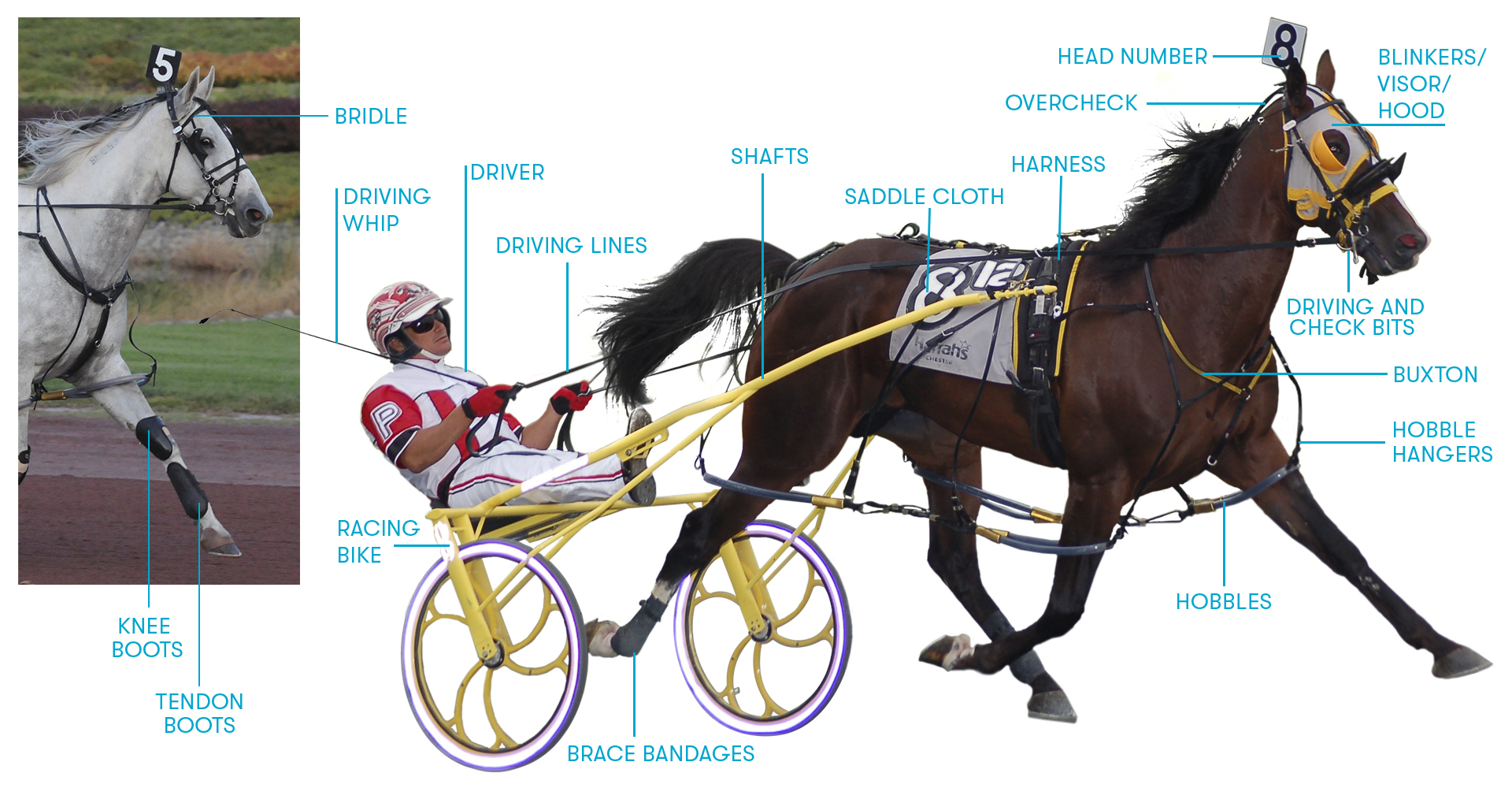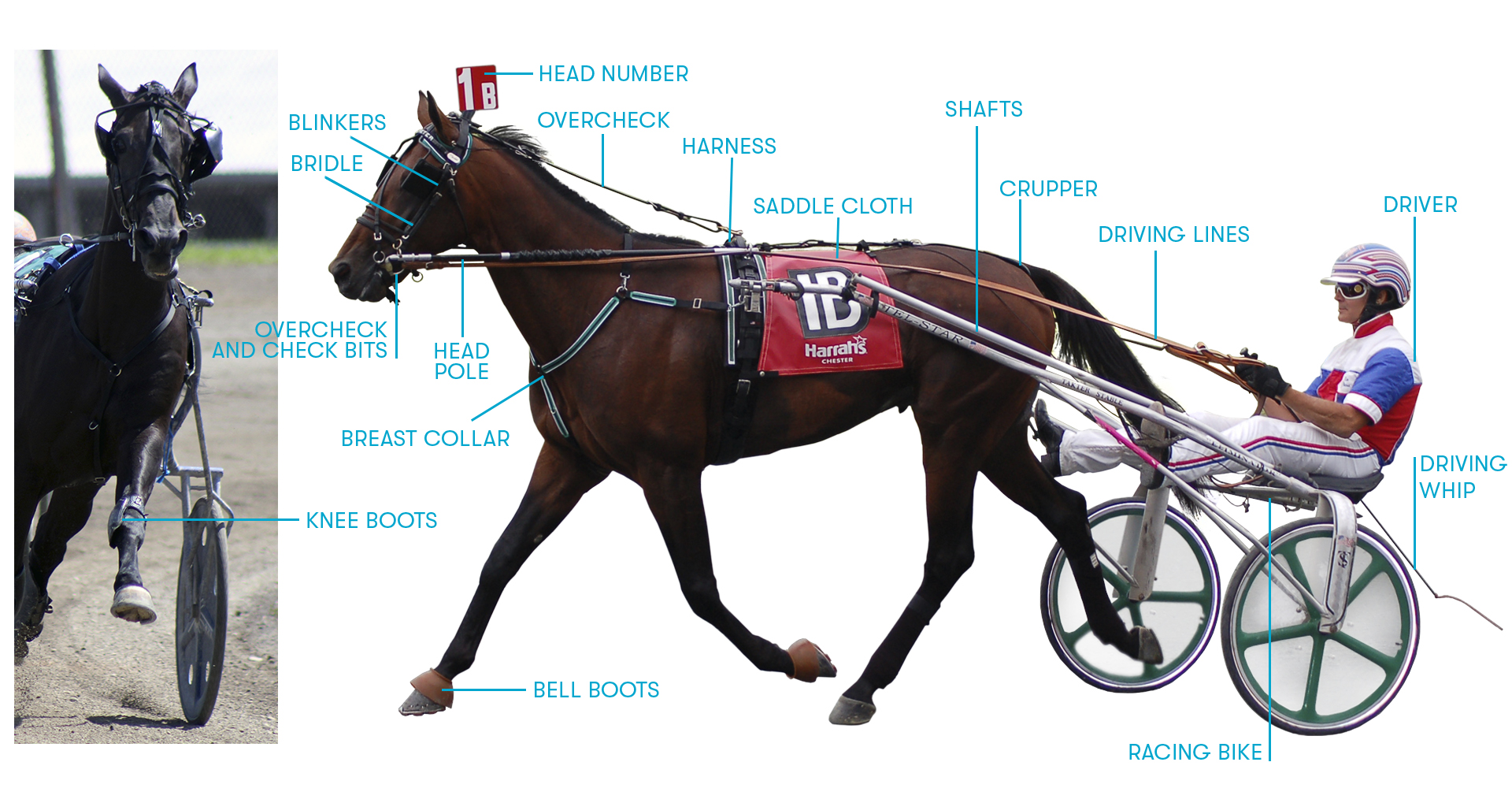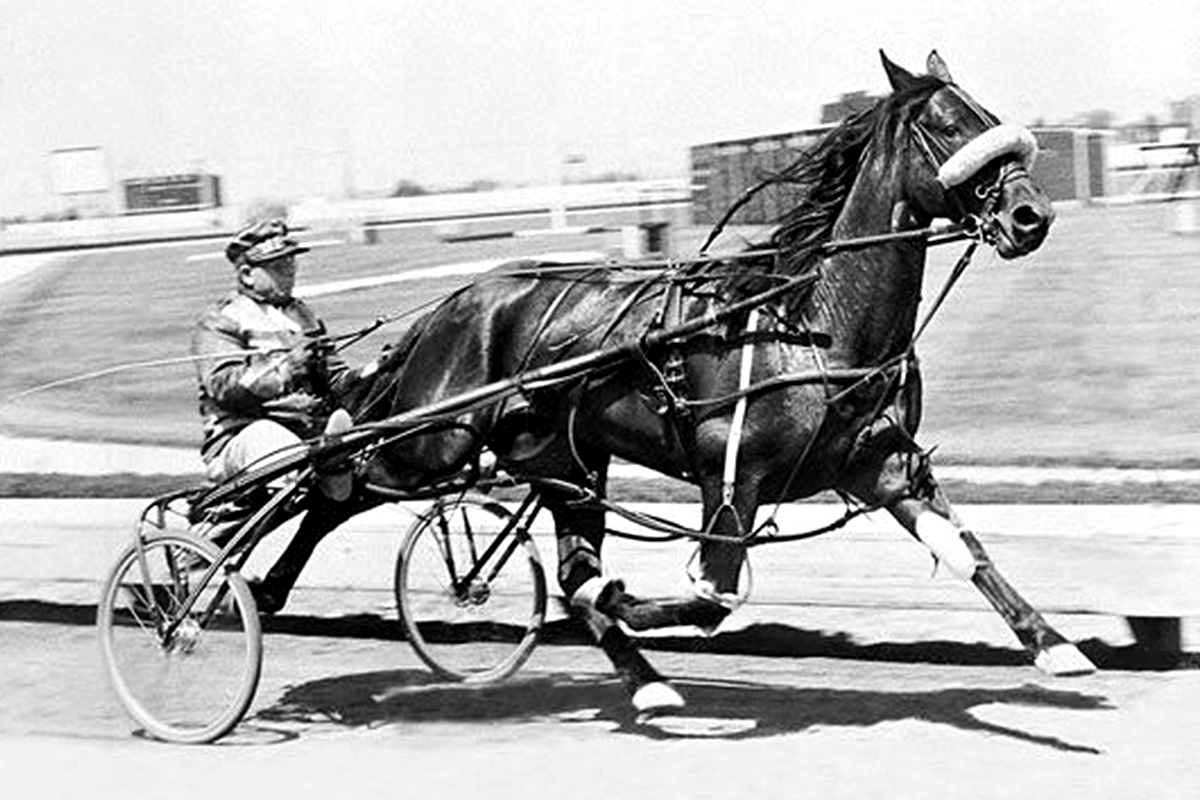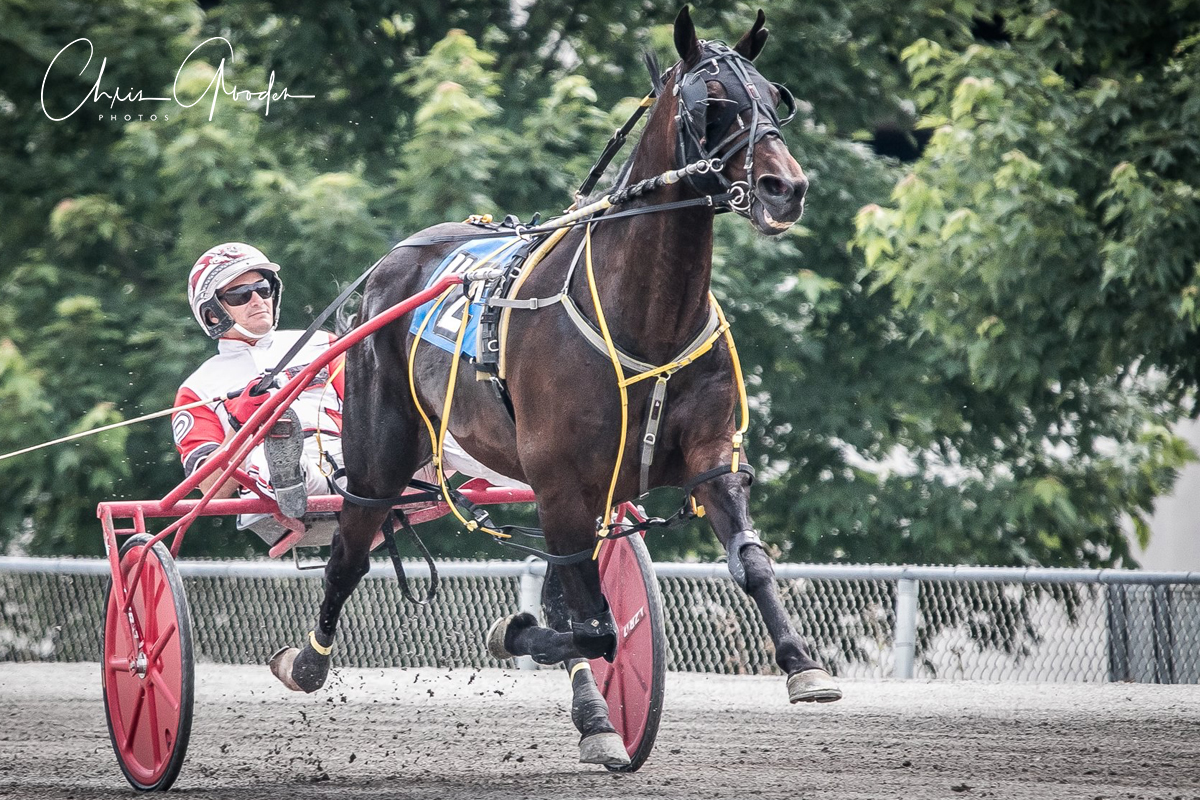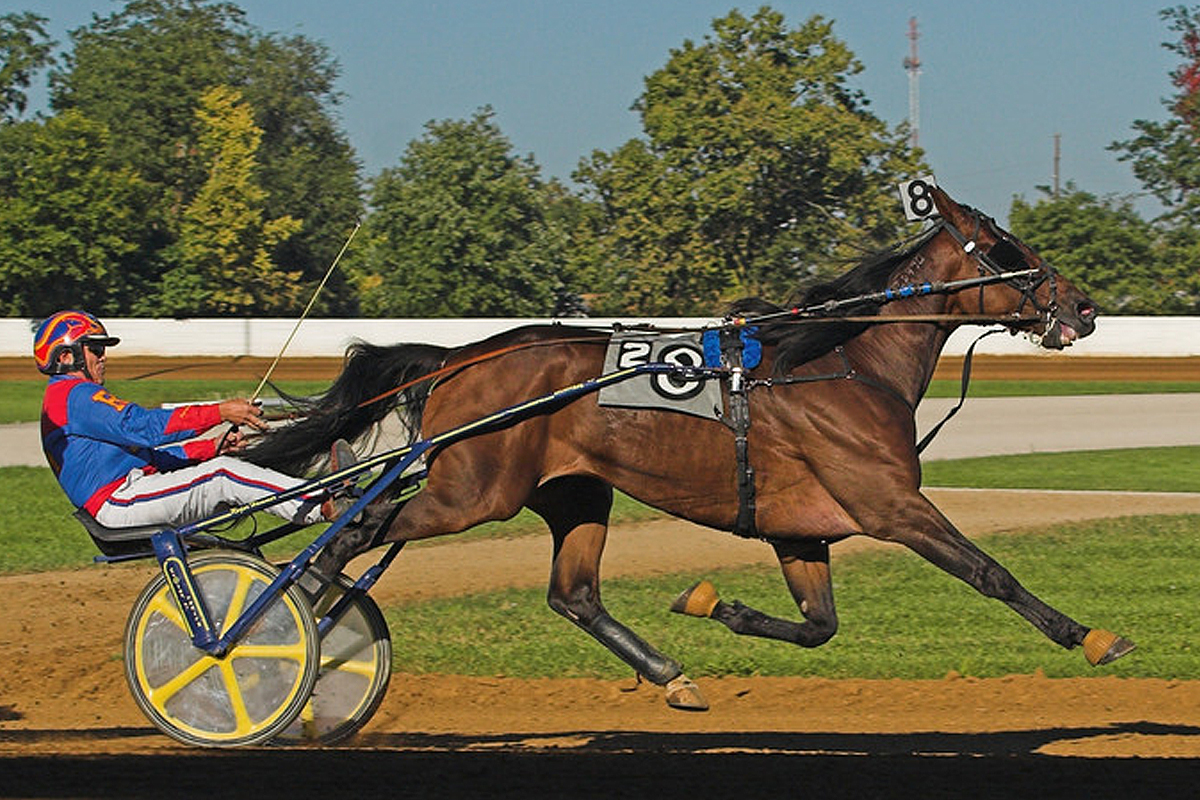What’s a Standardbred horse?
The Standardbred is a solid, long-bodied American horse breed, with a docile disposition, that’s most notably used for harness racing. The Standardbred name originated in 1879 by the National Association of Trotting Horse Breeders. For a horse to be considered part of the breed, specific “standards” had to be met. The horse had to be able to trot a mile in under 2 minutes and 30 seconds. Today’s Standardbreds are considerably faster, boasting under 2-minute mile times, with trotters being a few seconds slower than pacers. All Standardbred bloodlines can be traced back to one specific stallion, Hambletonian 10.
What makes it a harness race?
Harness racing is when a horse pulls a cart, known as a bike, with a driver in the sitting position. Harness races begin with a “rolling” start, where horses trot behind a mobile starting gate. Besides pulling bikes, harness racing’s most unique qualities are its racing gaits.
Courtesy of USTA
Standardbred gaits
A “gait” refers to how Standardbred horses actually move. There are two gait styles: the pace and the trot. Standardbreds are bred to perform a specific gait, so it’s rare that a horse will cross-compete as a trotter and pacer.
The “pacing gait” is when the horse’s front and back legs on the same side move in unison, meaning that the horse’s left front leg is moving forward while its left back leg is also moving forward. To help horses not “break stride,” which often results in the loss of a race, most pacers wear “hobbles” — straps connecting the front and back leg on each side.
The “trotter gait” is when the horse’s front and back legs alternate on each side, meaning that the horse’s left front leg is moving forward while its back right leg is moving forward. This type of gait does not require hobbles.
Within each gait style, horses are organized into classes. The faster the horse, the better the class and the larger the winner’s purse. Horses can move up and down classes but never across gait styles.
Harness racing in Pennsylvania
Pennsylvania’s earliest organized harness races took place at agricultural fairs during the early 1800s. Farmers who trained and used horses to pull carriages would take their fastest horses to county fairs to compete in “speed trials.” Today, the tradition continues on Pennsylvania’s three harness racing tracks (Mohegan Pennsylvania, Harrah’s® Philadelphia Racetrack & Casino and The Meadows Racetrack & Casino), as well as on the tracks of the fair circuit.
Famous names
Ron Burke
Born in Washington, Pennsylvania, Ron Burke is harness racing’s all-time leading trainer, with over 5,000 wins and over $200 million in career purse winnings. Burke has had a significant impact on the industry, where he continues to display an unrivaled passion and unparalleled race results.
Courtesy of USTA
Hanover Shoe Farms
It’s been said that even the word “dynasty” doesn’t truly encapsulate the near century-long breeding legacy that Hanover Shoe Farms has led. Located in Hanover, Pennsylvania, Hanover has been first in annual money earning totals every year since the USTA began counting — producing a multitude of winners in all of harness racing’s most prestigious races. Today, Hanover continues to be the top Standardbred breeding farm in the world, guided by Jim Simpson (son of John F. Simpson) and Russell Williams (grandson of Lawrence Sheppard).
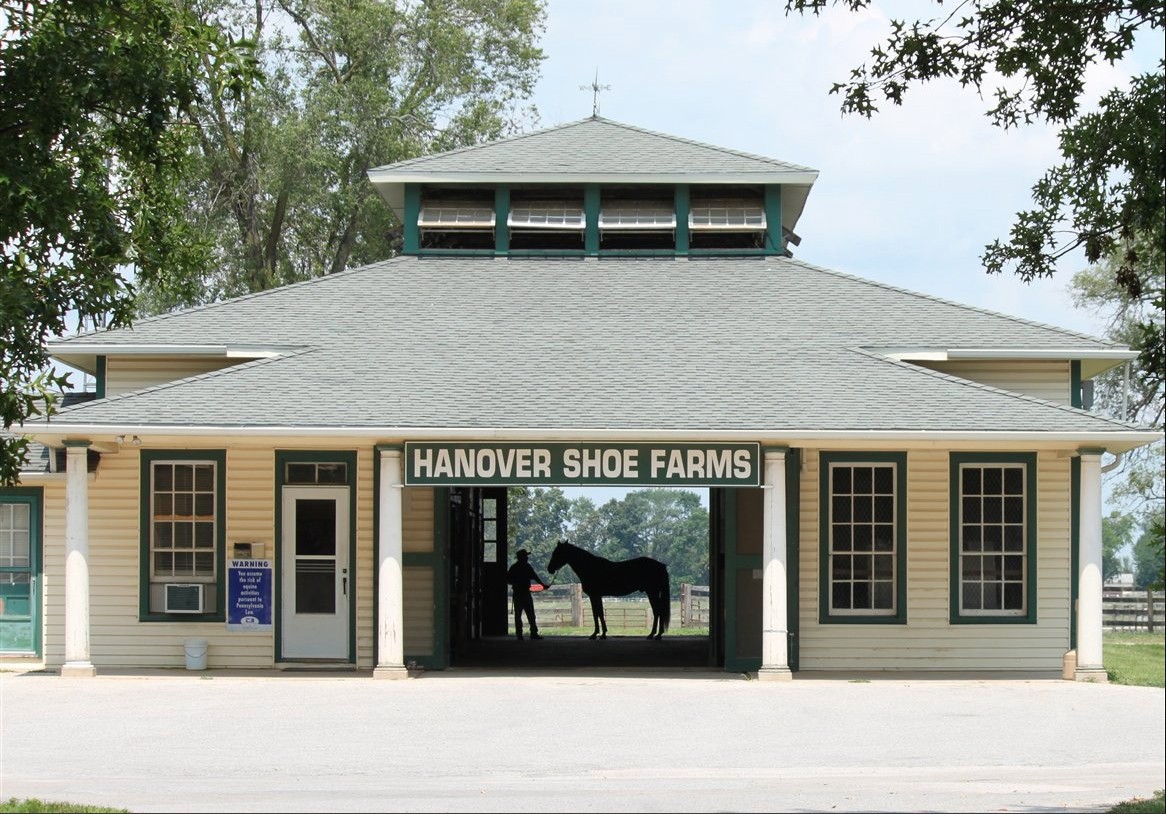
The driver factor
Drivers, like other athletes, possess varying amounts of ability. Anyone in the sport knows that Dave Palone and Aaron Merriman are among harness racing’s greatest drivers, and many people bet the horses they drive just for that reason. The top drivers are easy to spot. Besides being listed among the leaders in the program standings, these are the reinsmen who are in the winner’s circle most often. They know how to best plan out a race, and they know how and when to get their horses to give their all.
Harness tack
Tack is an integral part of harness racing. Due to the bike, there are quite a few more components. Additionally, race equipment is slightly different for pacers and trotters. Familiarizing yourself with the intricacies of harness racing tack will give you an even deeper appreciation and understanding of the sport.
Courtesy of USTA
Courtesy of USTA
Adios Harry
Adios Harry was bred by L. T. Hempt of Harrisburg. He won the 2-year-old Bloomsburg Fair Stake in 1953, then the Little Brown Jug in straight heats in 1953. He set a new three-heat world record for 3-year-old pacers on a ½-mile track in that event.
- Year of birth: 1951
- Lifetime mark: 1:55 at age 4
- Earnings: $345,433
- Resting place: Meadow Lands Farm, Meadow Lands, Pennsylvania
Bret Hanover
Bret Hanover was a winner of 62 of 68 races and $922,616. He held a modern-day record of 35 straight victories at ages 2 and 3. He was a Pacing Triple Crown winner, as well as a three-time Horse of the Year.
- Year of birth: 1962
- Lifetime mark: 1:53:3 at age 4 in a time trial
- Earnings: $922,616
- Resting place: Kentucky Horse Park, Lexington, Kentucky
Vivid Photo
Vivid Photo was owned by Roger Hammer (Bedford, Pennsylvania) and Todd Schadel (Spring Glen, Pennsylvania). Hammer also trained and drove. Vivid Photo started his career on the Pennsylvania Fairs before going on to win the 2005 Hambletonian. Vivid Photo is currently retired and living on Hammer’s farm in Bedford.
- Starts: 178
- 1st: 49
- 2nd: 30
- 3rd: 20
- Career earnings: $3,273,387
- Lifetime mark: 1:50:2 at age 4
